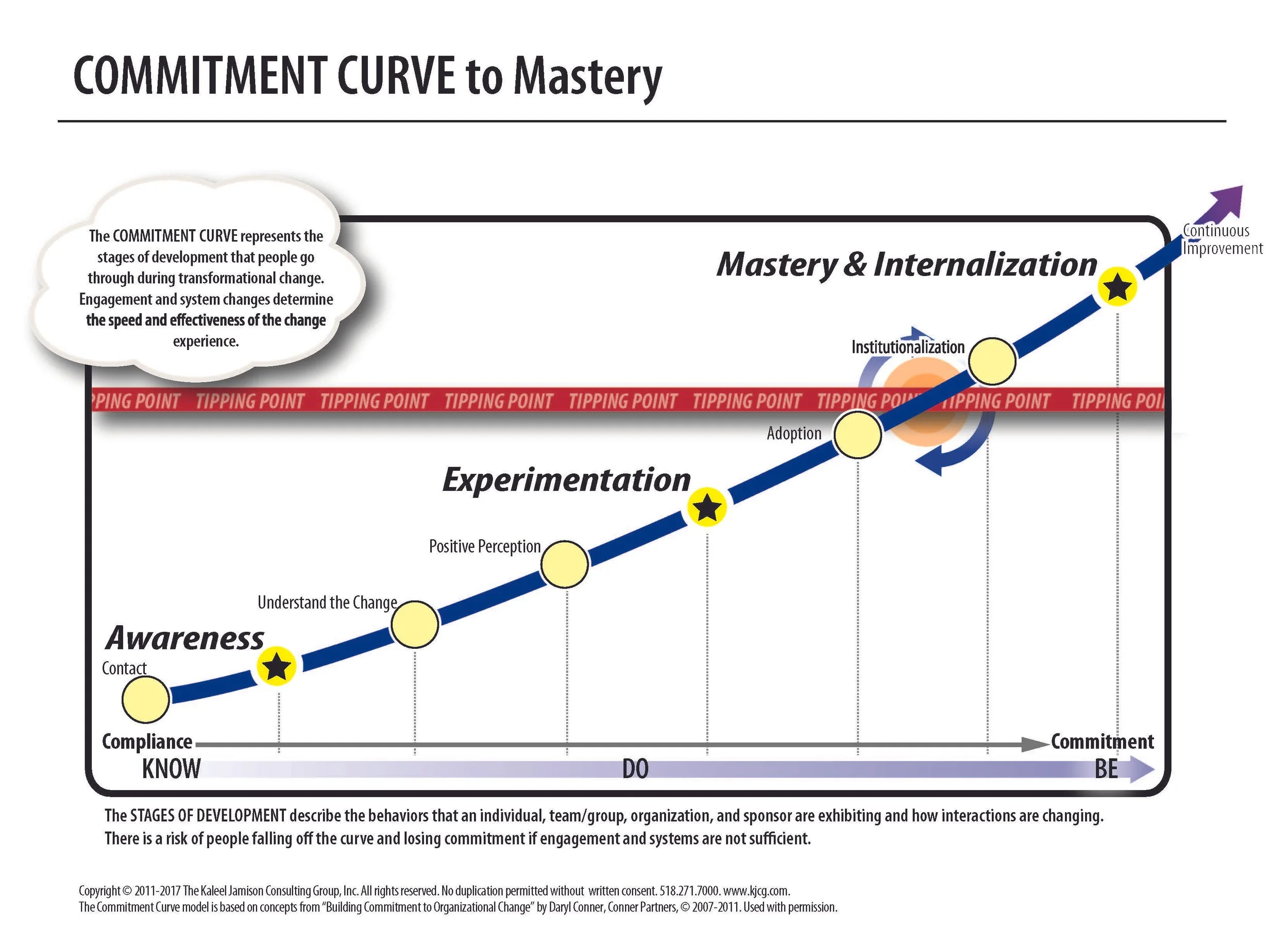Measuring an Inclusion as the HOW® Change Effort
In organization development and change management, a wealth of models measure how individuals respond to change. How might a model evaluate the movement of systems, teams, and individuals through a change effort? What happens when the change effort in question is focused on improving inclusion in the workplace? Over the past few years, we have asked these questions while partnering with a global organization to implement Inclusion as the HOW for accelerating results and achieving higher performance.
With the permission of change consultant Daryl Conner, we began by adapting the Patterson-Conner Commitment Curve—which charts the progress of individuals through a change—to plot the inclusion change effort at individual, group, and system levels. Our team designed a brief survey focused on the behavioral outcomes we anticipated at each milestone on the curve. With that survey in hand, we interviewed groups across the organization, testing the questions while evaluating how people were progressing up the curve.
The results gave us data about the progress of the inclusion change effort. Just as important, they provided far greater clarity, not only on the definitions of relevant behaviors, but also on which behaviors corresponded with which milestones. Early in the process, for example, we tested two questions: one asked people whether they had heard about the change effort overall, and another inquired whether they had heard about specific elements of the change. In accordance with the Commitment Curve, we identified the first question as an indicator of Contact and the second as an indicator of Awareness, thinking that people needed to hear about the change effort as a whole before exploring specific elements. What we found, however, was that people moved through the change much faster than we expected: so fast, in fact, that there was no significant difference in these questions. Instead, the better differentiator between Contact and Awareness was whether people had begun to undergo some education (formal or informal) on the components of the change.
We also saw, through measurable data, other dynamics of the change effort, among them:
If the change effort has enough momentum, even developments that might traditionally be seen as non-inclusive (e.g., downsizing) will not move the organization backward on the Commitment Curve—as long as those developments are handled inclusively. In the wake of one large restructuring, for instance, engagement scores remained consistently high, largely because the leaders modeled inclusive behaviors throughout the process.
Internal change agents must not move too far up the Commitment Curve vis-à-vis the rest of the system. Being “out of sight of the pack” often leaves change agents feeling vulnerable and alone. Their own momentum up the curve, and the creation of critical mass within their own organization, are at risk without senior leader sponsorship, strong leaders from their function, and a community of others practicing the new behaviors. This highlights the value of Communities of Practice, which bring change agents and early adopters together for mutual support.
Sequencing is essential. Some change agents, energized by the vision, try to engage all aspects of the change at once. For the system and the people in it, this is too much too fast, actually creating more resistance because the groundwork for the next stage is not yet ready.
As organizations feel ever more pressure to quantify return on investment, it is imperative to create reliable tools and strategies to measure change. Our hope is that this extension of the Patterson-Conner Commitment Curve helps organizations make the case for Inclusion as the HOW to accelerate results and achieve performance—and, more broadly, for design interventions to help individuals and the system integrate new behaviors so they become a way of life for the organization.
Catherine M. Volk, Judith H. Katz, and one of their key client partners presented on this topic on 10 April at the Multicultural Forum on Workplace Diversity.

